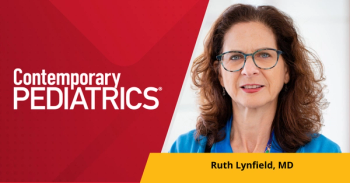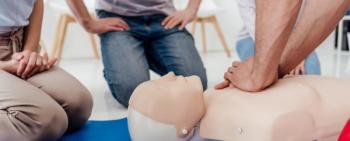
Dabbling in ‘dabbing’: What teens need to know
“Dabbing” is a way of inhaling a highly concentrated preparation of cannabis comprised of tetrahydrocannabinol (THC), the primary psychoactive cannabinoid found in the marijuana plant.
Reviewed by John Stogner, PhD
Marijuana, or cannabis, use among teenagers is increasing, and the ways in which they are using it are expanding. Smoking or inhaling it through joints or bongs, or ingesting through eating, remain common ways, but another delivery method, less well known, is undergoing scrutiny as more and more young persons engage in it.
“Dabbing” is a way of inhaling a highly concentrated preparation of cannabis comprised of tetrahydrocannabinol (THC), the primary psychoactive cannabinoid found in the marijuana plant. These preparations are made by extracting TCH from cannabis through a process that uses butane gas. As such, these preparations are called butane hash oil (BHO) and are more potent than flower cannabis.
“Oils have been around a long time,” says John Stogner, PhD, assistant professor, Department of Criminal Justice and Criminology, the University of North Carolina at Charlotte, “but not in the strengths that we are seeing today or used as widely.”
In a recent article published in the journal Pediatrics that examines the dangers of dabbing,1 Stogner and Bryan Lee Miller, PhD, provide an overview of dabbing and highlight the potential dangers of this high-potency product along with the still unknowns about its relative safety or risk compared with other types of marijuana use.
Given the increased production of BHO and dabbing, they urge physicians to help educate adolescents on the potential risks of this more potent form of cannabis.
First know the facts
Dabbing is the act of inhaling the vapors from a concentrate of THC (BHO), typically by placing the concentrate or BHO on a heated surface.2 This concentrate or product is made by using a butane solvent to extract the THC from the cannabis plant.
There are many ways to extract the THC to create BHO, including blasting, purging, open-column extraction, closed-loop system, and dual extraction.2 When butane extracts the THC from the cannabis plant through any 1 of these manufacturing methods, it evaporates and then leaves crystallized resins that can contain up to 80% THC concentration.1 Different BHO products are formed depending on a number of manufacturing variables, such as heat, pressure, and humidity.
Table 1 provides a list of colloquial terms commonly used to describe specific dabbing products.1,2
Because of the volatility of butane, manufacturing these products can be extremely dangerous. Manufacturing BHO is also not complicated, requiring few resources and easy-to-get instructions that have facilitated home manufacturing (particularly through “blasting”). The safety risks of BHO production, particularly blasting, therefore, are of concern and have been likened to those associated with manufacturing methamphetamine.1
Safety concerns
To date, few data are available on the relative risks of dabbing compared with other forms of marijuana use. The 1 peer-reviewed study that looked at the risk of dabbing found no association between dabbing and an increased risk of accident or injury.3 However, Stogner emphasizes that the study included only experienced cannabis users and he cautions that dabbing may have a much more severe effect on novice users.
No evidence yet provides sufficient data on the risks of dabbing, particularly in novice users, although unsubstantiated claims have been made both in support of its greater safety risk (ie, because of its more potent content and higher likelihood to lead to dependency)3 as well as its greater safety compared with smoking cannabis (ie, safer on the lungs, and manufacturing process eliminates bacteria, mold, and fungi).4
Despite the lack of direct evidence on the potential harms of dabbing, however, evidence does exist on the negative neuropsychologic effects of marijuana use in general and, in particular, on the developing adolescent brain.5 Further data also suggest an association between increases in THC potency and more adverse effects, such as an increased risk of psychosis,6 decreased age of onset psychosis,7 and impairment of creative thinking.8
Along with the substance itself, how dabbing products are made raises additional safety concerns. The high volatility of butane is particularly of concern because fires, explosions, and severe burning have been attributed to manufacturing BHO, particularly through home blasting.1,9 The paraphernalia used for dabbing also carry risk of injury, such as the risk of first-degree burns. The “oil rig,” a term used to refer to dabbing paraphernalia, is prepared by heating something called the “nail.” The nail is heated with a blowtorch to temperatures above 752°F. When sufficiently heated, a dab is placed onto the nail’s exposed surface and the user inhales as the dab vaporizes from the heated nail.1,2 Table 2 lists terms used for dabbing paraphernalia.
Additional concern comes from the potential long-term health effects of inhaling contaminants during the act of dabbing. A recent study in the Journal of Toxicological Sciences that screened 57 samples of concentrated cannabis extracts used for dabbing found that 80% of the samples had considerable residual solvent and pesticide contamination.10
Tone matters
The need to provide good information to teenagers and their parents on marijuana use is increasingly important as marijuana becomes more accessible through legalization. Evidence on the medicinal efficacy of marijuana in particular has driven the use of marijuana increasingly above ground, with marijuana now legalized for medical use in 23 states and Washington, DC, and recreational use in 4 states and Washington, DC.
Despite this growing availability and acceptance of marijuana, its use by teenagers remains an ongoing concern given the evidence on the deleterious effects of marijuana on the adolescent brain and the still many unknowns about its efficacy for medicinal purposes (no studies to date have included children). Because of this, the American Academy of Pediatrics is opposed to the use of marijuana in children and adolescents aged to 21 years.11,12
To effectively counsel teenagers, pediatricians and other healthcare providers need to recognize and know the many ways, such as dabbing, in which marijuana is used. As dabbing becomes more widespread, pediatricians may increasingly need to talk to their patients about this particular mode of delivery in the full context of a discussion on marijuana use.
When talking to adolescents about dabbing, Stogner emphasizes the need to reinforce the fact that dabbing is not the same as traditional flower cannabis and may carry more risks.
However, he also stresses the need to be truthful and direct about the many things still unknown about dabbing and its potential risks. “The best course of action is presenting what we know,” he says. “In the case of dabbing, we know that we don’t know much. At best, we have anecdotal information.”
Stogner also stresses the need to pay attention to how issues of drugs are presented to teenagers and their parents. Saying that the messages about drugs given to young persons are almost always sensationalized, he urges physicians to present the information factually and to steer clear of talking in terms of the next modern drug scare or the “scary drug of the year.”
“The information [young persons] gather from friends or personal experiences often runs counter to these sensational messages,” he says. “In turn, they disregard them and perhaps other important advice.”
Because of the dearth of research on the safety of dabbing, particularly in novice users, Stogner emphasizes urging teenagers to be cautious and to refrain from using it. “When something is new, it’s generally safer to wait to see what plays out before trying it yourself,” he says, echoing the type of message he thinks will play well with adolescents to actually affect their behavior.
REFERENCES
1. Stogner JM, Miller BL. Assessing the dangers of “dabbing”: mere marijuana or harmful new trend? Pediatrics. 2015;136 (1):1-3.
2. Black B. The official dab dictionary. High Times. Available at:
3. Loflin M, Earleywine M. A new method of cannabis ingestion: the dangers of dabs? Addict Behav. 2014;39(10):1430-1433.
4. Rosenthal E. Beyond Buds: Marijuana Extracts-Hash, Vaping, Dabbing, Edibles, and Medicines. San Francisco, CA: Quick American Archives; 2014.
5. Volkow ND, Baler RD, Compton WM, Weiss SR. Adverse health effects of marijuana use. N Engl J Med. 2014;370(23):2219-2227.
6. Di Forti M, Morgan C, Dazzan P, et al. High-potency cannabis and the risk of psychosis. Br J Psychiatry. 2009;195(6):4881-4891.
7. Di Forti M, Sallis H, Allegri F, et al. Daily use, especially of high-potency cannabis, drives the earlier onset of psychosis in cannabis users. Schizophr Bull. 2014;40(6):1509-1517.
8. Kowal MA, Hazekamp A, Colzato LS, et al. Cannabis and creativity: highly potent cannabis impairs divergent thinking in regular cannabis users. Psychopharmacology (Berl). 2015;232(6):1123-1134.
9. Schneberk T, Valenzuela RG, Sterling G, Mallon WK. Prehospital ramifications of butane hash oil synthesis and use. JEMS. Available at:
10. Raber JC, Elzinga S, Kaplan C. Understanding dabs: contamination concerns of cannabis concentrates and cannabinoid transfer during the act of dabbing. J Toxicol Sci. 2015;40(6):797-803.
11. Committee on Substance Abuse, Committee on Adolescence. Policy statement: The impact of marijuana policies on youth: clinical, research, and legal update. Pediatrics. 2015;135(3):584-587.
12. Ammerman S, Ryan S, Adelman WP; Committee on Substance Abuse, the Committee on Adolescence. Technical report: The impact of marijuana policies on youth: clinical, research, and legal update. Pediatrics. 2015;135(3):e769-e785.
Ms Nierengarten, a medical writer in Minneapolis, Minnesota, has over 25 years of medical writing experience, authoring articles for a number of online and print publications, including various Lancet supplements, and Medscape. The author has nothing to disclose in regard to affiliations with or financial interests in any organizations that may have an interest in any part of this article.
Newsletter
Access practical, evidence-based guidance to support better care for our youngest patients. Join our email list for the latest clinical updates.














